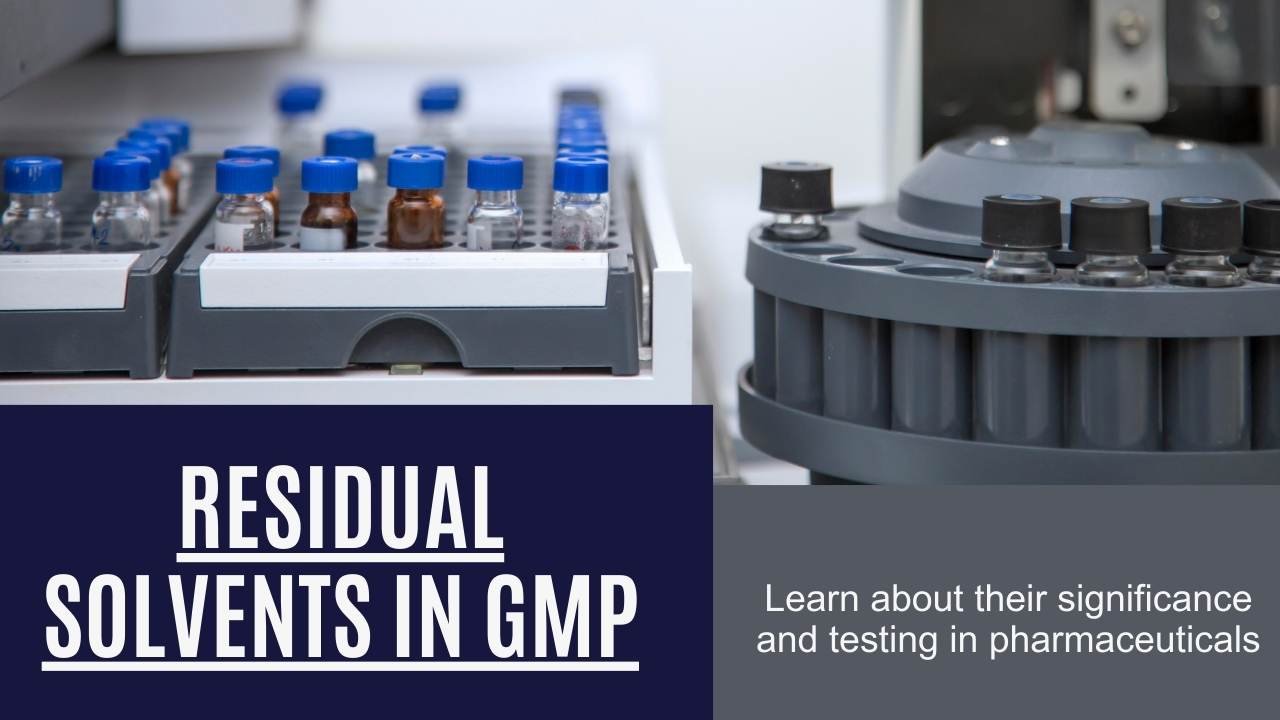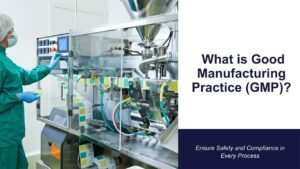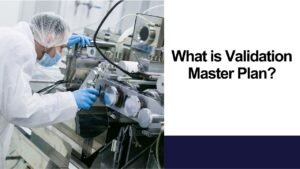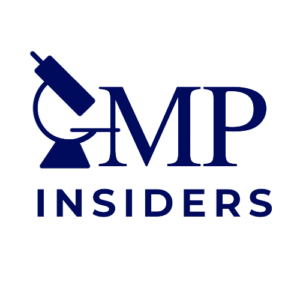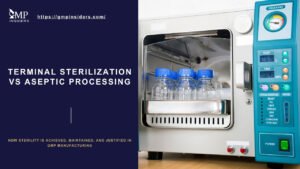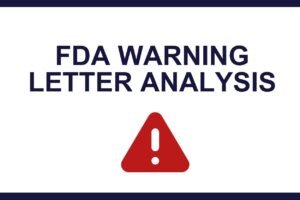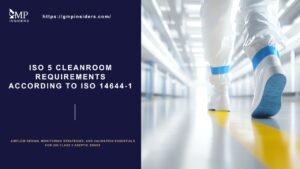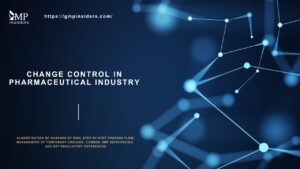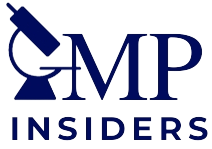Residual solvents, often referred to as organic volatile impurities (OVIs), constitute a crucial aspect of pharmaceutical production, mainly aiding in the synthesis, purification, and preparation of drug substances. However, their benefits come with a caution: the potential to remain in the final product as residuals. These solvents, depending on their concentration and toxicity, can pose significant health risks, ranging from mild irritations to serious toxicological effects.
This article aims to provide a comprehensive overview of residual solvents, the importance of their testing within the Good Manufacturing Practices (GMP) framework, and an understanding of relevant regulations, particularly the ICH Q3C guideline, USP 467, and FDA regulations.
Residual Solvents: An Overview
Residual solvents in pharmaceuticals are defined as organic volatile chemicals that are used or produced in the manufacture of drug substances or excipients, or in the preparation of drug products.
Residual solvents are organic, volatile chemicals that are used or generated during the manufacturing of APIs, drug products, or excipients. These chemicals carry no therapeutic benefits but may pose potential hazards to human health or the environment. As a result, it is crucial to ensure that they are either absent in the products or present only below the recommended acceptable levels.
The testing and management of residual solvents is thus a critical aspect of pharmaceutical manufacturing, governed by stringent regulatory standards globally.
In terms of regulations, Permitted Daily Exposure (PDE) establishes the maximum amount of a chemical substance that is considered acceptable for daily exposure in pharmaceutical products, based on available toxicological data. This measure is essential for ensuring patient safety, as it provides a scientifically based limit that manufacturers must adhere to when evaluating the presence of residual solvents in their products. The determination of PDE values for various solvents is grounded in thorough toxicological evaluation, taking into account potential adverse effects over a lifetime of exposure.
Classifications of Residual Solvents
To facilitate understanding and regulate their permissible limits, residual solvents are categorized into three classes based on their toxicity levels and potential environmental hazards.
Class 1 Residual Solvents
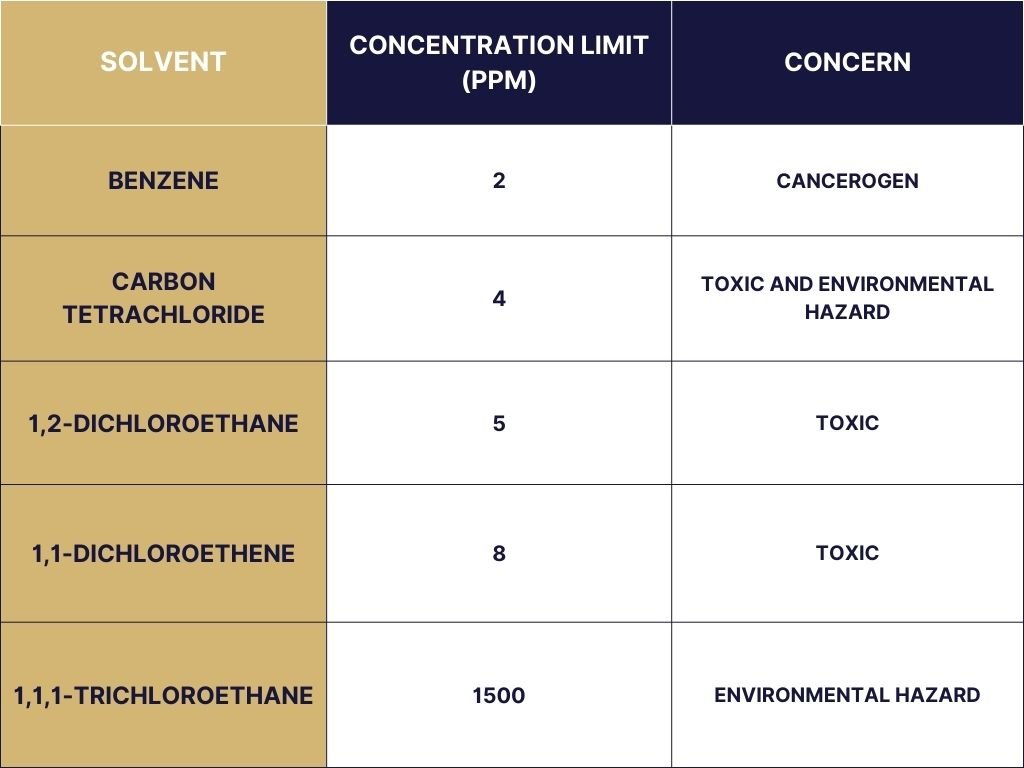
Class 1 solvents are considered to pose the highest risk due to their unacceptable toxicity or environmental hazards. These solvents are recognized carcinogens, exhibiting substantial harm to human health and the environment. They should be avoided unless necessitated by a significant therapeutic advantage, provided their levels are strictly controlled.
Examples: Benzene, Carbon tetrachloride, and 1,2-Dichloroethane
Class 2 Residual Solvents
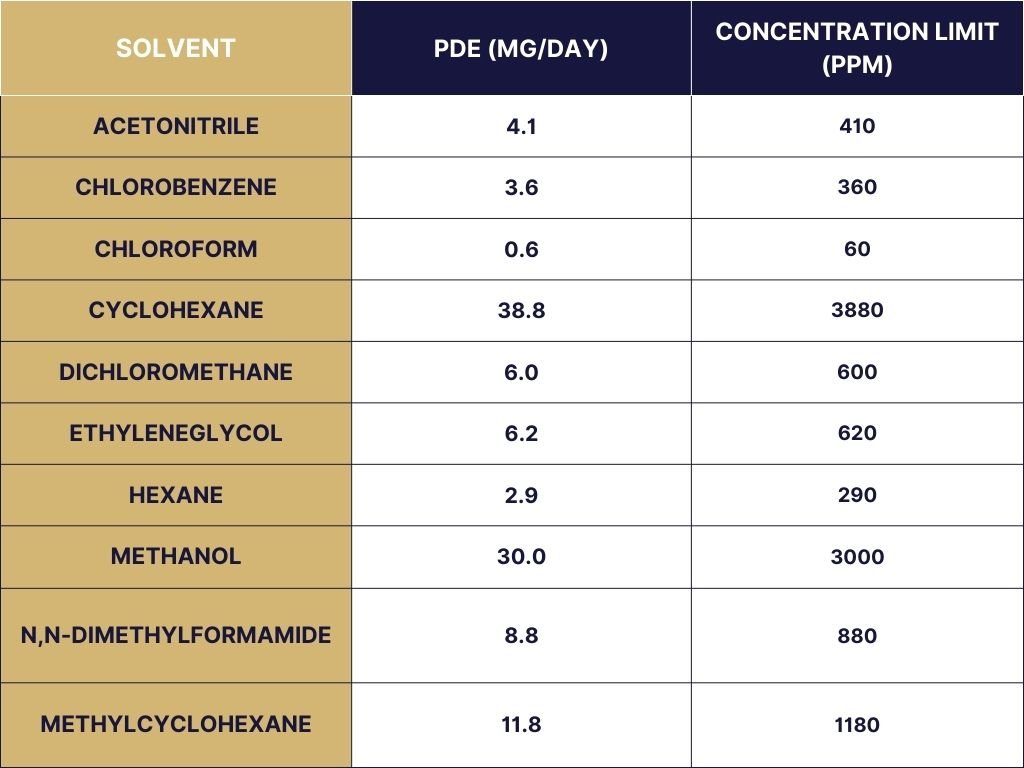
Class 2 solvents are those with medium toxicity, presenting significant risks to patients at higher concentrations. Non-genotoxic animal carcinogens fall into this class. Their levels are strictly limited based on established safety data due to their inherent toxicity.
Examples: Acetonitrile, Methanol, Pyridine, Chloroform, and Cyclohexane
Class 3 Residual Solvents
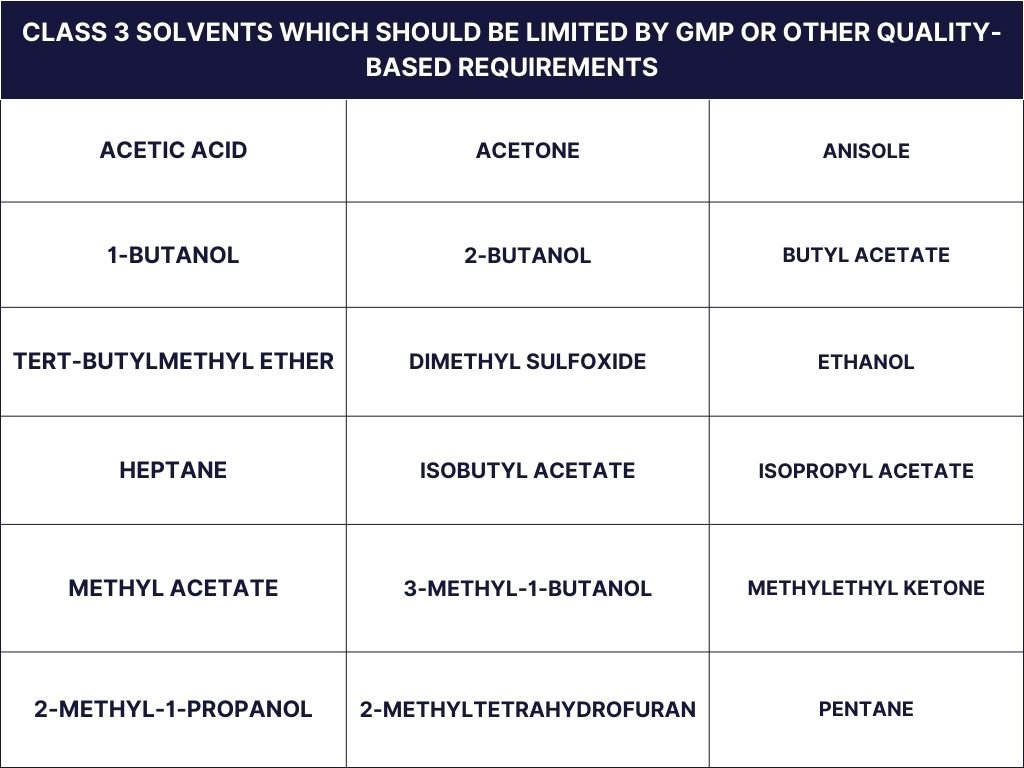
Class 3 solvents are regarded as less toxic and safer at higher concentrations. Despite their lower risk, their quantities are still controlled, adhering to the principle that all residual solvents should be minimized to the extent possible. These chemicals are considered less toxic based on acute or short-term studies.
Examples: Ethanol, Acetone, Isopropyl alcohol, and Acetic acid
Solvents for Which No Adequate Toxicological Data Was Found
ICH Q3C acknowledges that some solvents may not have sufficient toxicological data to warrant classification in the established Class 1, Class 2, or Class 3 categories. For these solvents, the guidance recommends minimizing their use and encourages further research to establish safe levels based on toxicological assessment.
As the specific list of solvents with no adequate toxicological data can change with updates to the guideline and as new research becomes available, it’s important to refer to the most recent version of the ICH Q3C document for the current list and any updates on their classification.
Importance of Residual Solvent Testing in GMP
In the context of GMP, residual solvents are not merely impurities but potential hazards that could compromise the safety and efficacy of the pharmaceutical product. Therefore, their detection, quantification, and control are imperative to ensure the product’s quality, safety, and integrity.
Managing residual solvents in pharmaceutical manufacturing involves sophisticated testing methods to accurately identify and quantify solvent levels, ensuring compliance with regulations. Gas chromatography (GC) is primarily used for its sensitivity and specificity with volatile organic compounds.
Additionally, GC headspace analysis is employed to efficiently sample volatile solvents directly from their matrix. The choice of analytical method depends on the solvent’s chemical properties, the pharmaceutical product’s complexity, and regulatory standards.
If not adequately managed, these solvents can pose significant health risks, including toxicity and adverse reactions in patients. Moreover, the presence of these substances at unacceptable levels can compromise the stability and integrity of the drug product.
Regulatory Guidelines for Residual Solvents
The regulation of residual solvents in pharmaceuticals is governed by a robust framework of international guidelines designed to ensure product safety and consistency. These guidelines specify the acceptable limits for solvent residues, testing methodologies, and documentation requirements, providing a comprehensive approach to solvent management.
ICH Guidelines for Residual Solvent Testing (ICH Q3C)
The International Council for Harmonisation of Technical Requirements for Pharmaceuticals for Human Use (ICH) provides a harmonized tripartite guideline, known as ICH Q3C, for testing residual solvents in pharmaceuticals.
- Global Benchmark: ICH guidelines serve as the international standard for residual solvents, providing a unified approach that aims for wide adoption by regulatory authorities worldwide. They classify solvents into three classes based on toxicity and set acceptable limits.
- Harmonization Focus: The primary goal is to harmonize regulatory requirements for pharmaceuticals globally, making them especially important for multinational companies.
United States Pharmacopeia (USP 467)
In the United States, the testing of residual solvents is governed by the USP General Chapter <467> “Residual Solvents.” This guideline stipulates that testing should be conducted only for those solvents that are used or produced during manufacture or purification.
- Methodology and Specificity: The USP offers detailed analytical method procedures for testing residual solvents and may specify limits that are unique to the U.S. market. It frequently aligns with ICH guidelines but provides additional clarity and specificity on testing methods.
- Legal Framework Integration: As a compendium of drug standards, the USP is recognized in the U.S. legal framework, giving its standards a specific legal standing in the United States.
U.S. Food and Drug Administration (FDA) Regulations on Residual Solvents
The FDA places significant emphasis on the control of residual solvents in pharmaceutical products. The FDA requires manufacturers to adhere to the ICH Q3C guideline for residual solvents and to demonstrate that their products are either free from residual solvents or contain them only at levels below the recommended limits.
- Regulatory Oversight and Enforcement: The FDA uses ICH guidelines as a foundation but also issues its own guidance documents, which can include additional requirements for the approval, manufacturing, and control of pharmaceuticals in the U.S.
- Guidance and Compliance: FDA guidelines provide specific instructions on compliance and enforcement, offering a more detailed roadmap for companies navigating the U.S. regulatory environment.
European Pharmacopoeia (Ph.Eur.) Regulations
Ph. Eur. outlines detailed standards for managing residual solvents in pharmaceuticals, aligning with ICH Q3C guidelines but with a focus on European regulatory specifics. It categorizes solvents based on toxicity, offers explicit analytical methods like gas chromatography for testing, and sets clear limits for solvent residues. The Ph. Eur. emphasizes the use of safer solvents to protect patient health and the environment, providing clear, actionable protocols for manufacturers within Europe to ensure product safety and regulatory compliance.
Chapters 2.4.24 and 5.4 specifically enhance this guidance, categorizing solvents based on toxicity, offering explicit analytical methods like gas chromatography for testing, and setting clear limits for solvent residues. Chapter 2.4.24 addresses the identification and control of residual solvents, providing analytical techniques and methodologies for quantification. Meanwhile, Chapter 5.4 focuses on guidelines for manufacturers on the reduction or elimination of residual solvents in pharmaceuticals.
- Regional Adaptation: While harmonizing with ICH guidelines, the Ph. Eur. includes specific requirements that are tailored to the European context, potentially including solvents not covered by ICH or different limits for certain solvents.
- Member State Flexibility: The Ph. Eur. allows for some flexibility among member states, which may have additional national regulations or interpretations.
FAQ
What strategies can pharmaceutical companies employ to minimize the use of Class 1 solvents, given their high toxicity?
To minimize the use of Class 1 solvents, pharmaceutical companies can employ alternative manufacturing processes that do not require these solvents, substitute them with less toxic solvents where possible, and implement advanced purification techniques to reduce or eliminate their presence in the final product.
What analytical methods are commonly used for the detection and quantification of residual solvents in pharmaceuticals?
The most commonly used analytical methods for detecting and quantifying residual solvents in pharmaceuticals include Gas Chromatography (GC), often coupled with Flame Ionization Detection (FID) or Mass Spectrometry (MS), and Head Space Analysis. These methods are favored for their sensitivity, accuracy, and ability to analyze a wide range of solvents at very low levels.
How can pharmaceutical companies minimize the presence of residual solvents in their products?
Pharmaceutical companies can minimize the presence of residual solvents by selecting raw materials with low solvent content, optimizing manufacturing processes to reduce or eliminate the use of harmful solvents, employing effective purification and drying techniques, and implementing rigorous quality control measures to detect and quantify any residual solvents throughout the production and packaging processes.
What challenges do pharmaceutical manufacturers face in controlling residual solvents, and how can they be addressed?
Challenges include the complexity of drug formulations, variability in raw material quality, and limitations of analytical detection methods. To address these challenges, manufacturers can invest in advanced analytical equipment, improve supplier quality assurance practices, develop better solvent recovery and recycling systems, and continuously update their GMP compliance strategies to reflect the latest regulations and technological advancements.
Conclusion
The analysis of residual solvents is a critical aspect of pharmaceutical manufacturing and quality control. Through the collaborative framework of international guidelines set by the ICH, alongside specific standards from the USP, FDA, and European Pharmacopoeia, the pharmaceutical industry is equipped to minimize the health risks associated with solvent residues. Each regulatory body brings its unique perspective and requirements, contributing to a comprehensive global approach to solvent management.
By adhering to these stringent guidelines, pharmaceutical manufacturers not only protect patient health but also uphold the integrity of the drug development process. The continuous evolution of these regulations reflects the industry’s commitment to safety, quality, and innovation, ensuring that patient well-being remains at the heart of pharmaceutical manufacturing.

